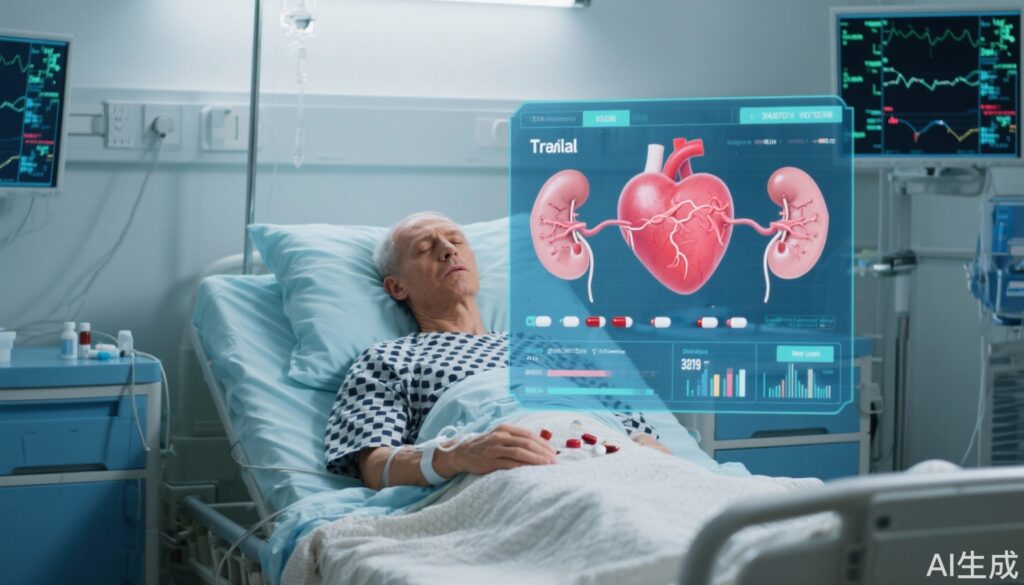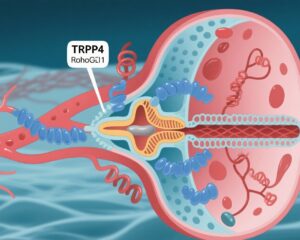Highlight
- In-hospital initiation of dapagliflozin did not significantly reduce cardiovascular death or worsening heart failure within the first two months in hospitalized patients.
- Overall mortality was lower in the dapagliflozin group compared to placebo (HR 0.66; 95% CI 0.43-1.00), bordering statistical significance.
- A meta-analysis combining multiple trials found early SGLT2 inhibitor initiation in hospitalized heart failure patients significantly reduces cardiovascular death or worsening HF (HR 0.71) and all-cause mortality (HR 0.57).
- Dapagliflozin was generally safe with low rates of symptomatic hypotension and kidney function worsening comparable to placebo.
Study Background and Disease Burden
Heart failure (HF) remains a major cause of morbidity and mortality worldwide, with frequent hospitalizations representing critical periods for adverse events. Sodium-glucose cotransporter-2 inhibitors (SGLT2i), originally developed for diabetes, have demonstrated robust benefits in reducing cardiovascular death and HF hospitalizations in stable, outpatient HF populations, with both reduced and preserved ejection fraction. However, evidence for starting SGLT2i during the vulnerable phase of hospitalization for acute HF is limited, despite the potential to mitigate early risk of worsening HF and death immediately post-discharge. Identifying effective therapies for in-hospital initiation is thus an urgent unmet clinical need to improve short-term and long-term outcomes.
Study Design
The DAPA ACT HF-TIMI 68 trial was a randomized, double-blind, placebo-controlled trial conducted between September 2020 and March 2025. A total of 2401 patients hospitalized for HF were enrolled across multiple centers. Key demographics included a median age of 69 years, 33.9% women, 18.7% Black participants, and 71.5% with left ventricular ejection fraction (LVEF) ≤40%. Nearly half had newly diagnosed HF.
Participants were randomized 1:1 to receive dapagliflozin 10 mg once daily or placebo initiated during hospitalization. The primary outcome was a composite of time to cardiovascular death or worsening HF within two months. Worsening HF was defined by need for intensification of HF therapies or readmission. Safety outcomes included symptomatic hypotension and decline in kidney function.
A prespecified meta-analysis integrated results from other randomized controlled trials evaluating SGLT2i initiation in hospitalized HF populations to assess the consistency of findings across studies.
Key Findings
In the primary analysis, 10.9% of patients in the dapagliflozin group versus 12.7% in the placebo group experienced the primary composite outcome (HR 0.86; 95% CI, 0.68-1.08; p=0.20), indicating no statistically significant benefit at two months.
Specifically, worsening HF events occurred in 9.4% (dapagliflozin) vs. 10.3% (placebo) (HR 0.91; 95% CI, 0.71-1.18).
Cardiovascular death rates were 2.5% vs. 3.1% (HR 0.78; 95% CI, 0.48-1.27), and all-cause mortality was 3.0% vs. 4.5% (HR 0.66; 95% CI, 0.43-1.00) in dapagliflozin vs. placebo groups respectively. While the mortality difference approached statistical significance, the trial was not powered to detect mortality differences as a primary endpoint.
Regarding safety, dapagliflozin was well tolerated. Symptomatic hypotension was reported in 3.6% vs. 2.2%, and worsening kidney function in 5.9% vs. 4.7% of patients in dapagliflozin and placebo groups, respectively, without significant safety concerns.
The meta-analysis combining data from trials initiating SGLT2i in hospitalized HF patients demonstrated a significant early reduction in the composite of cardiovascular death or worsening HF (HR 0.71; 95% CI, 0.54-0.93; p=0.012) and in all-cause death (HR 0.57; 95% CI, 0.41-0.80; p=0.001). This suggests that broadly, SGLT2i initiation during hospitalization confers clinical benefits beyond those seen in the DAPA ACT trial alone.
Expert Commentary
The DAPA ACT HF-TIMI 68 trial provides important prospective data on dapagliflozin use initiated during HF hospitalization. Although the primary composite endpoint did not reach statistical significance, the consistent trend toward benefit, including reduced mortality, aligns with the growing evidence base supporting early SGLT2i therapy. The modest absolute event rates and short two-month follow-up may have limited power to detect differences.
The meta-analysis strengthens the argument for early SGLT2i use in this high-risk setting, emphasizing the potential to improve clinically relevant outcomes during a traditionally vulnerable period.
Clinical guidelines increasingly recommend initiation of SGLT2 inhibitors for chronic HF; these findings suggest that starting therapy during hospitalization is reasonable and safe. Careful patient selection and monitoring remain warranted, especially considering the small increase in symptomatic hypotension and kidney function changes.
Mechanistically, SGLT2 inhibitors are thought to exert cardioprotective actions beyond glycemic control, including natriuresis, improved cardiac metabolism, reduced inflammation, and renal protection—mechanisms plausibly beneficial during acute decompensation.
Limitations include the trial’s relatively short primary endpoint timeframe, limiting assessment of longer-term outcomes, and the inclusion of a heterogeneous HF population. Further studies focusing on specific HF phenotypes, timing of initiation, and longer follow-up are needed.
Conclusion
In summary, in-hospital initiation of dapagliflozin in patients hospitalized for heart failure did not significantly reduce cardiovascular death or worsening heart failure at two months in the DAPA ACT HF-TIMI 68 trial. Yet, the totality of evidence from randomized trials indicates that early SGLT2i initiation during hospitalization is safe and may reduce both cardiovascular and all-cause mortality, as well as HF worsening.
These findings support the evolving paradigm of starting SGLT2 inhibitors promptly in hospitalized HF patients to address the high early risk period. Clinicians should consider this evidence when optimizing comprehensive HF care, and ongoing research will clarify long-term benefits and optimal management strategies.
References
Berg DD, Patel SM, Haller PM, et al; DAPA ACT HF-TIMI 68 Trial Committees and Investigators. Dapagliflozin in Patients Hospitalized for Heart Failure: Primary Results of the DAPA ACT HF-TIMI 68 Randomized Clinical Trial and Meta-Analysis of Sodium-Glucose Cotransporter-2 Inhibitors in Patients Hospitalized for Heart Failure. Circulation. 2025 Aug 29. doi: 10.1161/CIRCULATIONAHA.125.076575. Epub ahead of print. PMID: 40884036.
Additional sources for context:
– McMurray JJV, Solomon SD, Inzucchi SE, et al. Dapagliflozin in Patients with Heart Failure and Reduced Ejection Fraction. N Engl J Med. 2019;381(21):1995-2008.
– Packer M, Anker SD, Butler J, et al. Cardiovascular and Renal Outcomes with Empagliflozin in Heart Failure. N Engl J Med. 2020;383(15):1413-1424.
– Heidenreich PA et al. 2022 AHA/ACC/HFSA Guideline for the Management of Heart Failure. J Am Coll Cardiol. 2022;79(17):e263-e421.


